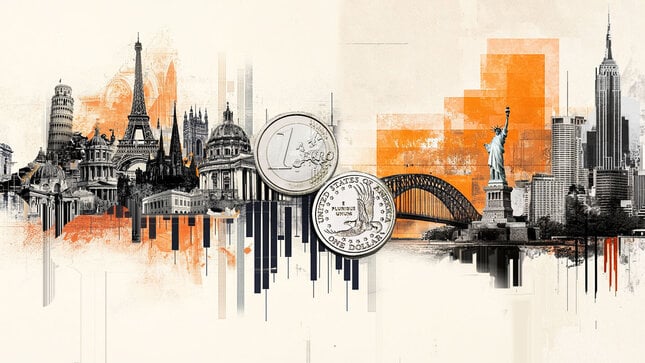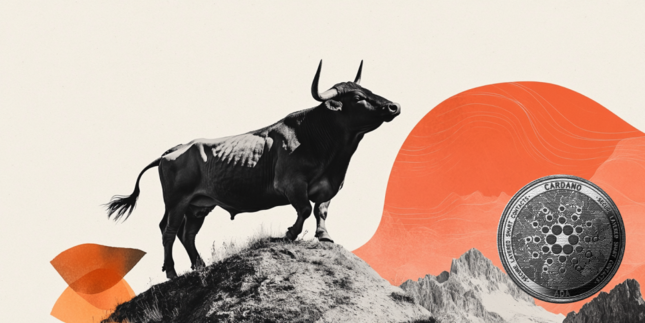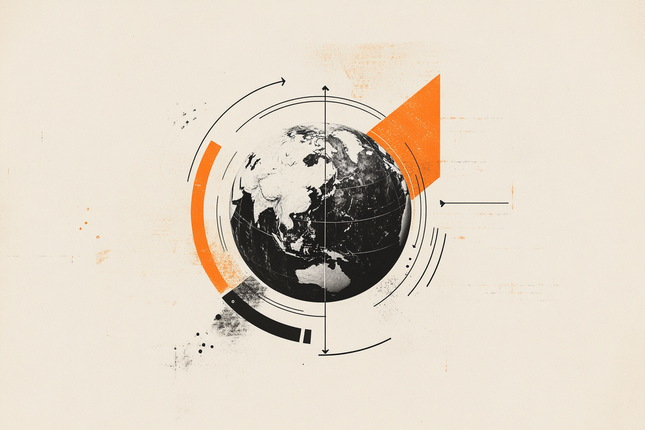If you are an entrepreneur, the first thing you need to do is stop apologizing for who you are and stop caring too much about what others think of you and of your ideas. We live in a world full of people who play safe, who stay within the guidelines learned in school, and who criticize those who think different than them. If you let their opinions influence your actions and decisions, you may never reach your full potential.
The stress is the same, so go bigger
Here’s a powerful thought: It takes the same amount of stress to worry about a $10,000 problem as it does to worry about a $1 million problem. The difference? The rewards. If you’re going to stress, stress over something worth the effort. Most people spend their lives negotiating against themselves, setting small, "realistic" goals because they fear failure or criticism. But what if you completely change the plan and aim for much bigger outcomes?
School trains us to think small
From a young age, we are trained to think small, to follow the conventional rules, get good grades, and aim for viable career choices. The education system never teaches us how to take risks, how to go after the big financial rewards, how to deal with failures, or how to think beyond conventional limits. So when you start aiming higher, don’t be surprised if people around you will push back. Thinking big is uncomfortable, and it will often lead todisagreementwith those who have settled for less.
Big goals have less competition
Most people aim for modest, "achievable" goals. That’s where the “people traffic” is, crowds of people competing for the same small slice of the business. But if you raise your ambitions and standards and aim for the extraordinary, you’ll find something surprising: There’s far less competition at the top. Thinking big is rare because it’s difficult and it requires higher level of stress tolerance. But once you break through, you’ll realize there’s more opportunity, not less.
What if you made your yearly income in a day?
Here’s a challenge: What if you aimed to make in a day what you typically make in a year? Let’s say that number is $150,000. At first, you may think this is impossible to achieve, but is it? Businesses close million-dollar deals every day. High-ticket sales, investments, and scalable opportunities exist if you’re willing to step into that bigger number space. The only difference between those who do it and those who don’t? Mindset.
Case study: Sarah Blakely – The billionaire who thought bigger
Sarah Blakely, the founder of Spanx, is a great example of what happens when youtake action and think bigger. She started like many other entrepreneurs with just a few thousand dollars and a business idea that most people dismissed. Instead of playing safe, she believed in her product, pushed past several rejection, and refused to let doubt prevent her from taking big steps forward. Today, she’s a billionaire. Her success wasn’t because she had more resources, it was because she was resourceful and thought big, took unapologetic action, and stopped caring about what other people thought of her.
Must-read book: “The 10X rule” by grant cardone
If you want to change your mindset and start aiming higher, the book The 10X Rule from entrepreneur Grant Cardone is an excellent resource to start with. The book basic idea is the following. Most people underestimate how much effort, risk, and ambition it takes to succeed. If you want to lead your industry, you need to think 10 times bigger and take 10 times more action.
Raise your standards and don’t negotiate against yourself
If you want to achieve big results, you need to be unapologetically bold and never look back regardless of your failures. Stop seeking approval. Stop playing small. The market rewards those who are unafraid to think beyond the conventional limits. So,try asking yourself:
Are you negotiating against yourself?
Are you setting goals based on what is defined as realistic or what’s truly possible?
Are you letting the fear of criticism from people around youpreventing you from taking bold actions?
Remember that you have a choice: think big or stay small. The stress is the same, but the rewards are exponentially different.
Now, what’s your big goal? And what are you going to do next?
All information posted is for educational and information use only, and it should never replace professional advice. Should you decide to act upon any information in this article, you do so at your own risk.
Editors’ Picks

EUR/USD retreats below 1.1750 on modest USD recovery
EUR/USD stays under modest bearish pressure and trades below 1.1750 on Friday. Although trading conditions remain thin following the New Year holiday and ahead of the weekend, the modest recovery seen in the US Dollar causes the pair to edge lower. The economic calendar will not feature any high-impact data releases.

GBP/USD struggles to gain traction, stabilizes above 1.3450
After testing 1.3400 on the last day of 2025, GBP/USD managed to stage a rebound. Nevertheless, the pair finds it difficult to gather momentum and moves sideways above 1.3450 as market participants remain in holiday mood.

Gold climbs toward $4,400 following deep correction
Gold reverses its direction and advances toward $4,400 after suffering heavy losses amid profit-taking before the New Year holiday. Growing expectations for a dovish Fed policy and persistent geopolitical risks seem to be helping XAU/USD stretch higher.

Cardano gains early New Year momentum, bulls target falling wedge breakout
Cardano kicks off the New Year on a positive note and is extending gains, trading above $0.36 at the time of writing on Friday. Improving on-chain and derivatives data point to growing bullish interest, while the technical outlook keeps an upside breakout in focus.

Economic outlook 2026-2027 in advanced countries: Solidity test
After a year marked by global economic resilience and ending on a note of optimism, 2026 looks promising and could be a year of solid economic performance. In our baseline scenario, we expect most of the supportive factors at work in 2025 to continue to play a role in 2026.
RECOMMENDED LESSONS
Making money in forex is easy if you know how the bankers trade!
I’m often mystified in my educational forex articles why so many traders struggle to make consistent money out of forex trading. The answer has more to do with what they don’t know than what they do know. After working in investment banks for 20 years many of which were as a Chief trader its second knowledge how to extract cash out of the market.
5 Forex News Events You Need To Know
In the fast moving world of currency markets where huge moves can seemingly come from nowhere, it is extremely important for new traders to learn about the various economic indicators and forex news events and releases that shape the markets. Indeed, quickly getting a handle on which data to look out for, what it means, and how to trade it can see new traders quickly become far more profitable and sets up the road to long term success.
Top 10 Chart Patterns Every Trader Should Know
Chart patterns are one of the most effective trading tools for a trader. They are pure price-action, and form on the basis of underlying buying and selling pressure. Chart patterns have a proven track-record, and traders use them to identify continuation or reversal signals, to open positions and identify price targets.
7 Ways to Avoid Forex Scams
The forex industry is recently seeing more and more scams. Here are 7 ways to avoid losing your money in such scams: Forex scams are becoming frequent. Michael Greenberg reports on luxurious expenses, including a submarine bought from the money taken from forex traders. Here’s another report of a forex fraud. So, how can we avoid falling in such forex scams?
What Are the 10 Fatal Mistakes Traders Make
Trading is exciting. Trading is hard. Trading is extremely hard. Some say that it takes more than 10,000 hours to master. Others believe that trading is the way to quick riches. They might be both wrong. What is important to know that no matter how experienced you are, mistakes will be part of the trading process.
The challenge: Timing the market and trader psychology
Successful trading often comes down to timing – entering and exiting trades at the right moments. Yet timing the market is notoriously difficult, largely because human psychology can derail even the best plans. Two powerful emotions in particular – fear and greed – tend to drive trading decisions off course.
